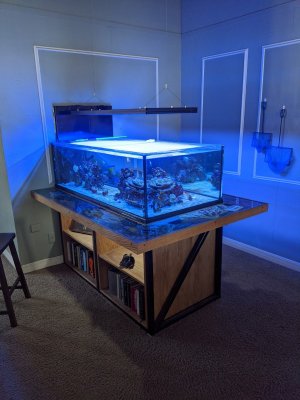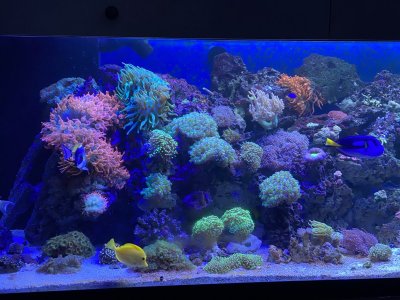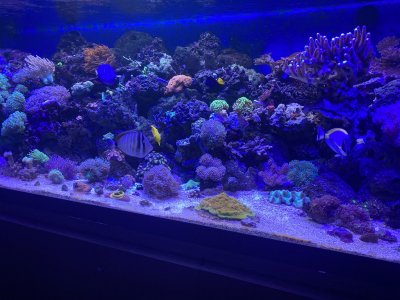I agree and that’s exactly what I got out of it as weWhile I get that a larger tank costs more in every way, I think the main point that I take away from your cautionary tale is that when you start to do home improvements to fit a tank, costs can skyrocket.
You could have been fine at $15K for a large tank. But once you start to knock down walls and installing floor drains, you can always open up a can o worms, just like any home remodel.
i understand that being a very hard pill to swallow especially after you have people review plans and they say it’s good then you find out it not.I've been in this hobby and reading about reefkeeping for many years. I repeatedly see threads on "what would you do if you could start over?" A common answer is "I would set up a larger system." I want to push back on that.
There is so much pressure to go big and so many reasons why big tanks make sense. Many people's progressions in the hobby look like mine. I started with 10g freshwater, then 20g, then 38g reef, then 75g reef, and now planning a 240g reef (this is all over more than 25 years, so I'm not talking about impulsive upgrading behavior). Each time I wanted more stability, more aquascaping possibilities, more stocking options, and more to see. So now I'm about 18 months into *planning* a large system (see my build thread) and I'm having some regrets before I've even put any water in the tank. With larger tanks, everything gets more expensive, and I mean really expensive. Larger tank, more rock, more sand, bigger light fixture with more lights, larger wavemakers, bigger sump, bigger return pumps, more salt, more electricity, more water.
But I want to share a cautionary tale about how my dream reef tank, original budget of around $15K, is now going to cost more than a sports car. I am doing a fish room with an in-wall display, so I had to open the walls. The architect said the wall was not load-bearing -- good news! Then two weeks into construction they went "oops, we were wrong, it's holding up two levels of the house." No problem, add $2500 for some new supports added out wide to replace the one we removed for where the display tank sits. Should be fine, but let's have a structural engineer review just in case. That will only cost $500 or so. Then, as we're digging a trench in the slab for a floor drain (an absolute requirement), we got another nasty surprise. The basement slabs in my neighborhood (homes are all about 100 years old) are about 3" to 6" thick instead of 12" to 18". So we need to tear up half the basement slab, excavate, and pour new concrete footings for the tank and for the vertical beams supporting the house. Another $10K. I suppose we might have wanted a thicker slab anyway, but the house would have had at least another 50 years before it was a problem.
So I'm about to approve that change order to the construction contract, but seriously thought about whether I could sell the custom tank that's been sitting in the garage and downsize to something that won't break my house. Too late, I guess, since we already moved the supports and I've already accumulated all the equipment that goes with this particular tank. Fortunately I can absorb these costs and still pay for my kids' college and our retirement, maybe have a skip a couple of vacations. But the lesson learned (which I hope to share) is that if you are a normal person who has not been lucky to have investments go well and save for 20+ years, then try to make the most of that 20 gallon, or 55 gallon or whatever tank or even a nano, and take it as a challenge on how to create something beautiful in a small box and how to keep it stable. We need to celebrate nanos and "regular" size tanks and reef-keepers who maintain them and not feel or create pressure to upgrade. Yes, we'll always drool over the ocean-sized tanks online with armies of tangs swimming busily and peacefully over an expanse of mature coral reefs, but think twice before you go big.
Although I am baffled about the slab thickness. I don’t know where you’re at but 4” slabs are standard for us in Washington whether it be garage or basement. Only thing I can think of is they did a monolithic slab for you but even then you would only have thickened areas where your footings were not the whole thing. And if your whole slab is only 3-6” well someone messed up. I hope everything from here out goes smooth as butter for you.




















